
ATLANTIS FINALLY DISCOVERED: Veljko Milković offers 100.000 dinars to anyone who disapproves his thesis

LEGACY OF ATLANTIS: Pannonian Atlantis and Veljko Milković mentioned in the new book
September 9, 2022
IDEA: Veljko Milković suggests what you can use instead of a steel ball bearing in the two-stage mechanical oscillator
September 27, 2022Veljko Milković claims that the legendary Atlantis was discovered in the area of the Pannonian Basin and that he has solid evidence for this. For this reason, he offers a reward of 100,000 dinars to the one who manages to disprove his thesis. The publishing house VEMIRC is preparing a new book - a collection of works published by historians from the Balkans, which further confirms this theory. This article is the first in a series of articles that will present evidence justifying the discovery of Atlantis.
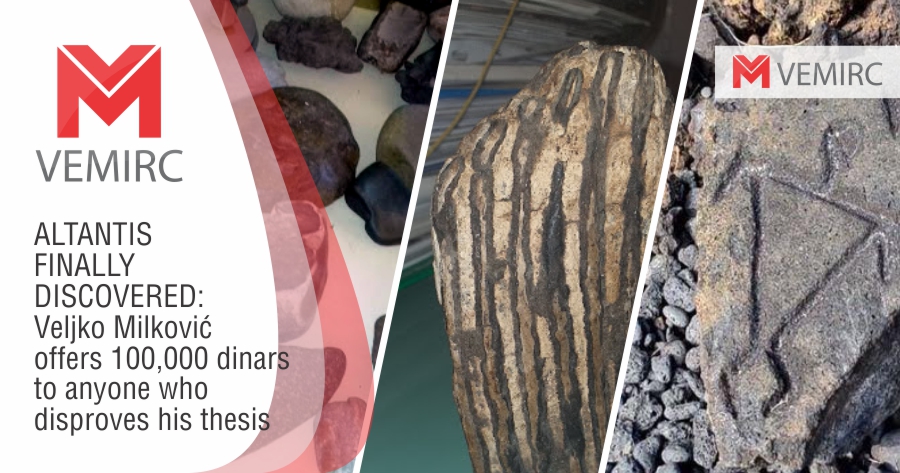
Once, in ancient times, beyond the strait of the "Pillars of Hercules" (Gibraltar), noted Plato, there was a large island called Atlantis. The island had an area of about 154,000 square miles, and about 20 million people lived on it. The country was rich in hot springs, and the forests were home to elephants and other African animals. The fertile plains were intersected by many canals, which served as waterways for transporting various goods and agricultural products. The wealth of this civilization is told by the fact that its capital was surrounded by high bronze walls, and castles, villas and temples were covered with gold and silver.
I am convinced that Atlantis was not located in the Atlantic Ocean, and that it was located on the territory of today's Vojvodina, i.e. Podunalje, all the way to the Đerdap Gorge (Iron Gates Gorge), for which I have evidence. Great world powers have always wanted to appropriate everything, so they want Atlantis as well. Let's take into account what is in the museum in London, which absolutely does not belong there, so the Greeks are also interested in having theirs returned to them. We also witnessed what the white man did to the Indians, and therefore I responsibly claim that this is how the powerful convinced the public that Atlantis was located in the Atlantic Ocean. The book I wrote talks about that - says Novi Sad inventor Veljko Milković.
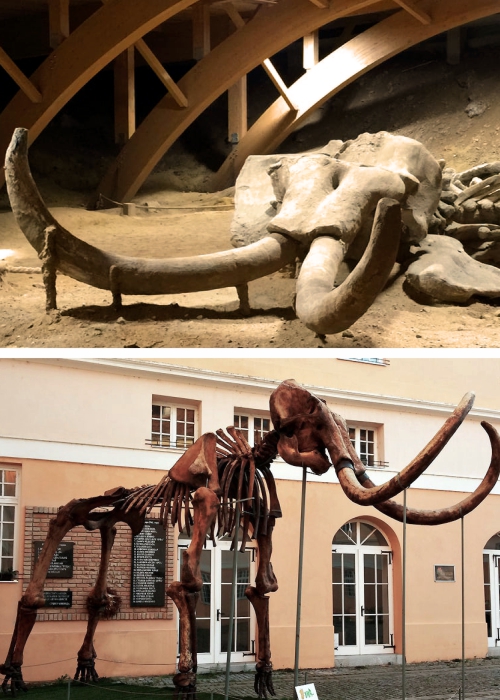
Picture 1. Above: Mammoth Vika discovered in a pit near Kostolac, below: Mammoth Kika found in a clay pit of the company Toza Marković from Kikinda
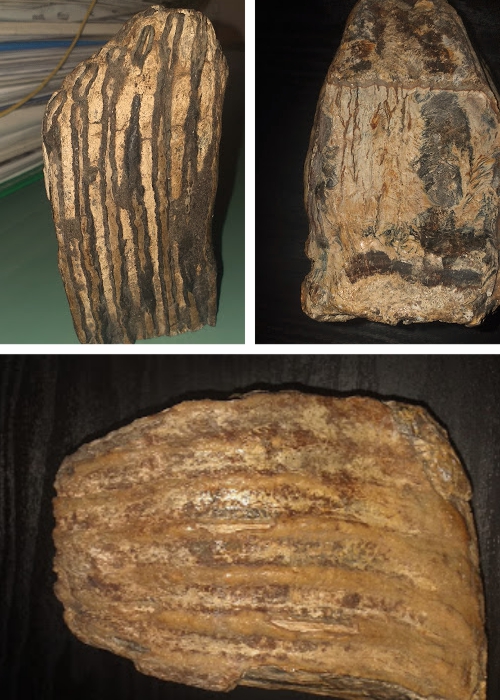
Figure 2. Photographs of fossil teeth and remains of mammoth tusks from the private collection of Veljko Milković
That's why he decided to offer a reward of 100,000 dinars to anyone who will demolish his thesis that Atlantis was located in Vojvodina - Sertbia, because everything written is correct, except of course the location. If it is taken into account that the Romans took all the myths from Ancient Greece, and even the mythical hero Hercules, then it is known that the Pillars of Hercules are located in Djerdap Gorge.
Another thing, according to him, is that the Greeks in ancient times were closer to our soil, compared to the Atlantic Ocean, as well as the fact that Atlanteans and Ancient Greeks have identical names.
The third thing is elephants - that is, mammoths! Namely, the giant furry tusks with huge tusks from movies about the Ice Age and the ancestors of today's elephants, lived in modern day Serbia for thousands of years - says Milković. The best proof of the flourishing animal life in these areas are the fossils of mammoths discovered in Kostolac and Kikinda. Kika and Vika, as they were affectionately named after the places where they were found (Kikinda and Viminacium), are excellently preserved. Vika is estimated to be about a million years old and it is assumed that she died stuck in the mud, which contributed to the excellent preservation of the skeleton. And of course the fourth thing is the artifacts that Milković found, and which eminent experts said were made with the most modern laser technology.
Attempts to identify an area that could undoubtedly correspond to the mythical land of Atlantis have so far been unsuccessful, since they did not rely on the paleogeographical reality that is very important for the distant past of the Old World. These attempts are associated with a long stay in what is now the Central Danube Depression, and thus lies within the Pannonian Basin, an endorheic region in which the vast lacustrine area of the Pannonian Sea survives.
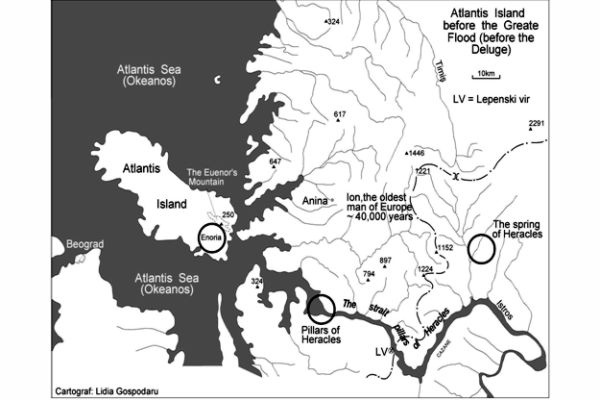
Figure 3. VieDisplay of the Pillars of Herakles and the site of Lepenski Vir (LV) in relation to the Pannonian Sea, the Black Sea and the presumed location of Pannonian Atlantis
This area was clearly separated from the neighboring basins of the Central Paratethys about 7 million years ago and persisted until prehistoric times, as an internal part of the sea, which was mainly characterized by the presence of archipelagos in the western part of this area. Only after the formation of the Iron Gates Gorge (Đerdap gorge), which probably took place during one of the cataclysmic events that shaped the entire Europe, the image of the old lake changed significantly. In the southeastern part of the Pannonian Basin, the lake existed for a long time. It was mainly fed by the 4 main rivers of the middle Danube depression - says Milković.
The civilization of Atlantis, which in addition to the archipelago included the shores of the Pannonian Sea, so the total area is almost equal to that mentioned by Plato, developed in a mild climate, which was influenced by the position of Atlantis connected to huge masses of water and the presence of certain important hydrothermal resources still known today within Pannonian Basin. Today, the largest thermal lake in the world - Lake Héviz and about 1,500 thermal springs can be found there. The civilization was based on the presence of important natural resources (forests, salt, gold, silver, copper, etc.) which are still known in the Carpathians, which border the Pannonian Basin in the north and east. This is exactly how rich Podunaclje and Vojvodina are today, because the population engaged in agriculture, animal husbandry and crafts - just like in Vojvodina. They dug and smelted ore - just like there is ore on Fruška Gora. There was an abundance of gold, the most valued material. In the middle of the island there were two springs; one with cold and one with hot water – geysers in Vojvodina. Around them, residents built swimming pools, some of which were covered, which are spas in Vojvodina. There were several cities and three suburbs. The fertile plains were intersected by many canals, which served as waterways for transporting various goods and agricultural products - how about the DTD canal, Novi Sad, Belgrade, Sremska Mitrovica...
Just as everything is recycled, so was Atlantis, because its ruins were taken to different places, but the artifacts remained.
Just look at the Petrovaradin fortress, which was completely different than the one we know today. By the way, the population that survived preserved in their memory these events that later became myths. Later, these myths spread through the rest of the population that spread throughout these areas. In addition, the old inhabitants of the Pannonian area "exported" their own toponyms of this ancient area to the numerous regions they inhabited after the migration that followed the disasters. The relations between the Atlanteans and the Ancient Greeks can easily be explained through the connection with the Pannonian area through the current toponyms that have Greek mythic overtones in the area located northwest of the Apuseni (Western) Mountains. It must be mentioned the "trend" to find a solution to the problem of Atlantis in accordance with the information that was unfairly considered outdated, and which is offered to us by Plato's writings in terms in which extremely valuable information is included in the works of other ancient authors, among whom stand out Diodorus Siculus and his "Biblioteca Historica" ("Historical Library"), in which he mostly dealt with the tradition of the Amazons - concluded Milković.
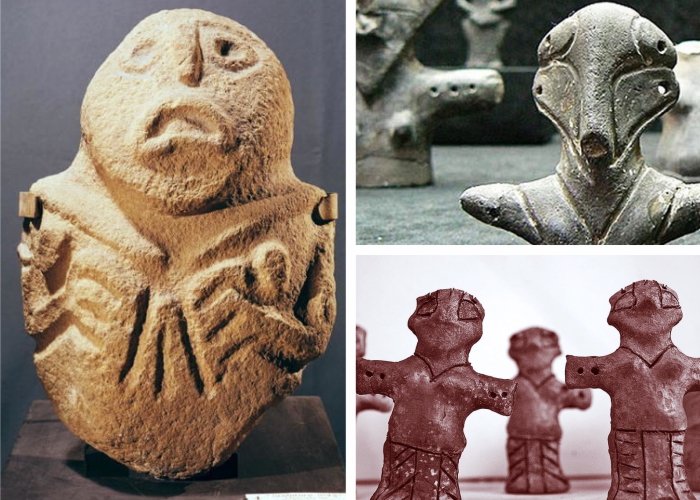
Figure 4. Left: Sculpture found at the site of Lepenski Vir - 9.000 years BC, right top and bottom: sculptures found at the site of Vinča - 7.500 years BC.
We should not ignore the fact that some world-recognized priorities were located near this area: "Mesolithic Paradise" (Lepenski Vir - 9,000 years BC), the oldest known world record (Vinča, Tartaria - about 7,500 years BC), the oldest ceramic pipeline for drinking water (within the area of the ancient capital of Dacia from Sarmizegetus Regia, in the Southern Carpathian mountains - around 7,000 BC). In addition, we must also mention the Dacian sanctuary present from Sarmizegetus, evidence of a highly developed civilization, located within the central area already known as "Old Europe".
The summary of the work was presented at the Second International Conference "The Atlantis Hypothesis: The Search for the Lost Earth", held on November 10-11, 2008 in Athens, Greece ( November 10, 2008, conference no.2 )
We remind you that this is the first in a series of articles in which concrete evidence will be presented for the claim that Atlantis was in the area of the Pannonian Basin and today's Vojvodina.




